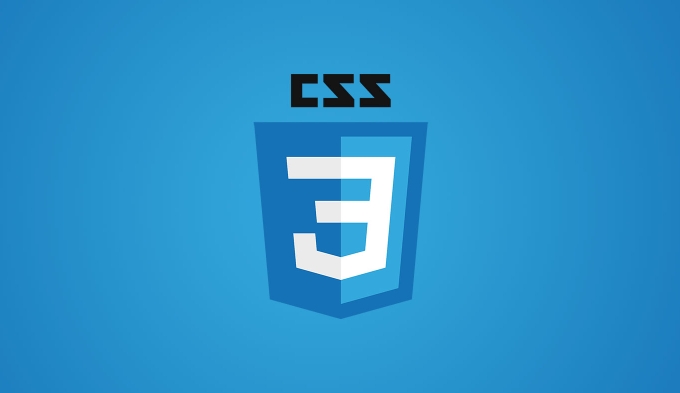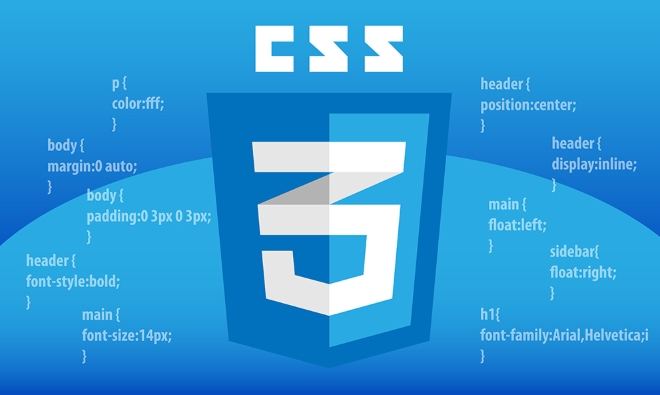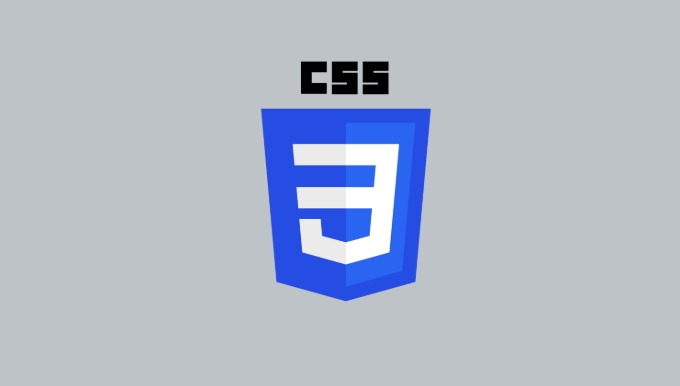 Web Front-end
Web Front-end
 CSS Tutorial
CSS Tutorial
 How to use the `:checked` pseudo-class for checkbox/radio button styling?
How to use the `:checked` pseudo-class for checkbox/radio button styling?
How to use the `:checked` pseudo-class for checkbox/radio button styling?
Jul 20, 2025 am 02:20 AMUse the :checked pseudo-class to customize checkbox and radio button styles based on the selection state, but because native controls are difficult to beautify directly, they usually need to be implemented in combination with other selectors or custom visual elements. The basic usage is to directly apply:checked to input, such as: input[type="checkbox"]:checked { border-color: green; }, but the cross-browser effect is limited. A more reliable way is to hide the default input and build custom controls: 1. Hide the real input (input[type="checkbox"] { display: none; }); 2. Create custom visual elements (such as span.checkmark); 3. Use the :checked adjacent brother selector to change the style (input[type="checkbox"]:checked .checkmark { background-color: #4CAF50; }). The same applies to radio buttons. Only the HTML type is changed to radio, and ensure that the name attributes of the same group are consistent. Cross-browser tips include testing multiple platforms, avoiding relying on colors only, adding focus states, using transition effects with caution, and checking selector syntax, input state, and JavaScript interference.

When you want to style checkboxes or radio buttons based on their selection state, the :checked pseudo-class is your go-to tool. It applies styles when a checkbox or radio input is selected. But since those form elements are tricky to style directly, most of the time you'll end up using it in combination with other selectors or custom visuals.

Basic Usage of :checked
You can use :checked directly on the input element like this:
input[type="checkbox"]:checked {
border-color: green;
}However, styling native checkboxes and radios this way has limited effectiveness across browsers. A more reliable approach is to hide the default input and build a custom one using labels and sibling combiners.

Styling Custom Checkboxes and Radios
To create sylable checkboxes or radios, start by hiding the original input:
input[type="checkbox"] {
display: none;
}Then create a custom visual — often a span or label — that changes appear when the checkbox is checked. Here's how you might do it:

<label class="custom-checkbox"> <input type="checkbox" /> <span class="checkmark"></span> </label>
And the CSS:
.custom-checkbox .checkmark {
width: 20px;
height: 20px;
background-color: #eee;
display: inline-block;
vertical-align: middle;
}
input[type="checkbox"]:checked .checkmark {
background-color: #4CAF50;
} This uses the adjacent sibling selector ( ) to target the .checkmark whenever the checkbox is checked.
- Hide the real input
- Style a fake checkbox next to it
- Use
:checkedto change the fake box's look
It gives you full control over how the checkbox looks in both states.
Handling Radio Buttons the Same Way
Radio buttons work the same way. You structure HTML similarly and apply styles when they're checked. The main difference is the HTML type:
<label class="custom-radio"> <input type="radio" name="group" /> <span class="radiomark"></span> </label>
The CSS would follow a similar pattern:
input[type="radio"]:checked .radiomark {
background-color: #2196F3;
} Make sure all related radio buttons share the same name attribute so only one can be selected at a time — standard browser behavior still apply here.
Cross-Browser Tips and Gotchas
- Always test in multiple browsers — especially Safari vs Chrome/Firefox.
- Avoid relying solely on color to indicate state; add shapes or borders too.
- Don't forget focus states for accessibility.
- Use transitions sparingly — they can make toggling feel sluggish.
Also, if you're not seeing changes take effect:
- Double-check your selector syntax
- Make sure inputs aren't disabled or read-only
- Ensure there's no JavaScript interfering with the checked state
Basically that's it.
The above is the detailed content of How to use the `:checked` pseudo-class for checkbox/radio button styling?. For more information, please follow other related articles on the PHP Chinese website!

Hot AI Tools

Undress AI Tool
Undress images for free

Undresser.AI Undress
AI-powered app for creating realistic nude photos

AI Clothes Remover
Online AI tool for removing clothes from photos.

Clothoff.io
AI clothes remover

Video Face Swap
Swap faces in any video effortlessly with our completely free AI face swap tool!

Hot Article

Hot Tools

Notepad++7.3.1
Easy-to-use and free code editor

SublimeText3 Chinese version
Chinese version, very easy to use

Zend Studio 13.0.1
Powerful PHP integrated development environment

Dreamweaver CS6
Visual web development tools

SublimeText3 Mac version
God-level code editing software (SublimeText3)
 How to change text color in CSS?
Jul 27, 2025 am 04:25 AM
How to change text color in CSS?
Jul 27, 2025 am 04:25 AM
To change the text color in CSS, you need to use the color attribute; 1. Use the color attribute to set the text foreground color, supporting color names (such as red), hexadecimal codes (such as #ff0000), RGB values (such as rgb(255,0,0)), HSL values (such as hsl(0,100%,50%)), and RGBA or HSLA with transparency (such as rgba(255,0,0,0.5)); 2. You can apply colors to any element containing text, such as h1 to h6 titles, paragraph p, link a (note the color settings of different states of a:link, a:visited, a:hover, a:active), buttons, div, span, etc.; 3. Most
 How to purge unused CSS?
Jul 27, 2025 am 02:47 AM
How to purge unused CSS?
Jul 27, 2025 am 02:47 AM
UseautomatedtoolslikePurgeCSSorUnCSStoscanandremoveunusedCSS;2.IntegratepurgingintoyourbuildprocessviaWebpack,Vite,orTailwind’scontentconfiguration;3.AuditCSSusagewithChromeDevToolsCoveragetabbeforepurgingtoavoidremovingneededstyles;4.Safelistdynamic
 What is a stacking context?
Jul 27, 2025 am 03:55 AM
What is a stacking context?
Jul 27, 2025 am 03:55 AM
Astackingcontextisaself-containedlayerinCSSthatcontrolsthez-orderofoverlappingelements,wherenestedcontextsrestrictz-indexinteractions;itiscreatedbypropertieslikez-indexonpositionedelements,opacity
 Describe different CSS units and when to use them
Jul 27, 2025 am 04:24 AM
Describe different CSS units and when to use them
Jul 27, 2025 am 04:24 AM
In web development, the choice of CSS units depends on design requirements and responsive performance. 1. Pixels (px) are used to fix sizes such as borders and icons, but are not conducive to responsive design; 2. Percentage (%) is adjusted according to the parent container, suitable for streaming layout but attention to context dependence; 3.em is based on the current font size, rem is based on the root element font, suitable for elastic fonts and unified theme control; 4. Viewport units (vw/vh/vmin/vmax) are adjusted according to the screen size, suitable for full-screen elements and dynamic UI; 5. Auto, inherit, initial and other values are used to automatically calculate, inherit or reset styles, which helps to flexibly layout and style management. The rational use of these units can improve page flexibility and responsiveness.
 How to use the CSS backdrop-filter property?
Aug 02, 2025 pm 12:11 PM
How to use the CSS backdrop-filter property?
Aug 02, 2025 pm 12:11 PM
Backdrop-filter is used to apply visual effects to the content behind the elements. 1. Use backdrop-filter:blur(10px) and other syntax to achieve the frosted glass effect; 2. Supports multiple filter functions such as blur, brightness, contrast, etc. and can be superimposed; 3. It is often used in glass card design, and it is necessary to ensure that the elements overlap with the background; 4. Modern browsers have good support, and @supports can be used to provide downgrade solutions; 5. Avoid excessive blur values and frequent redrawing to optimize performance. This attribute only takes effect when there is content behind the elements.
 How to style links in CSS?
Jul 29, 2025 am 04:25 AM
How to style links in CSS?
Jul 29, 2025 am 04:25 AM
The style of the link should distinguish different states through pseudo-classes. 1. Use a:link to set the unreached link style, 2. a:visited to set the accessed link, 3. a:hover to set the hover effect, 4. a:active to set the click-time style, 5. a:focus ensures keyboard accessibility, always follow the LVHA order to avoid style conflicts. You can improve usability and accessibility by adding padding, cursor:pointer and retaining or customizing focus outlines. You can also use border-bottom or animation underscore to ensure that the link has a good user experience and accessibility in all states.
 How to center text in CSS?
Jul 27, 2025 am 03:16 AM
How to center text in CSS?
Jul 27, 2025 am 03:16 AM
Use text-align:center to achieve horizontal centering of text; 2. Use Flexbox's align-items:center and justify-content:center to achieve vertical and horizontal centering; 3. Single-line text can be vertically centered by setting line-height equal to the container height; 4. Absolute positioning elements can be combined with top: 50%, left: 50% and transform:translate (-50%, -50%) to achieve centering; 5. CSSGrid's place-items:center can also achieve dual-axis centering at the same time. It is recommended to use Flexbox or Grid first in modern layouts.
 What are user agent stylesheets?
Jul 31, 2025 am 10:35 AM
What are user agent stylesheets?
Jul 31, 2025 am 10:35 AM
User agent stylesheets are the default CSS styles that browsers automatically apply to ensure that HTML elements that have not added custom styles are still basic readable. They affect the initial appearance of the page, but there are differences between browsers, which may lead to inconsistent display. Developers often solve this problem by resetting or standardizing styles. Use the Developer Tools' Compute or Style panel to view the default styles. Common coverage operations include clearing inner and outer margins, modifying link underscores, adjusting title sizes and unifying button styles. Understanding user agent styles can help improve cross-browser consistency and enable precise layout control.





